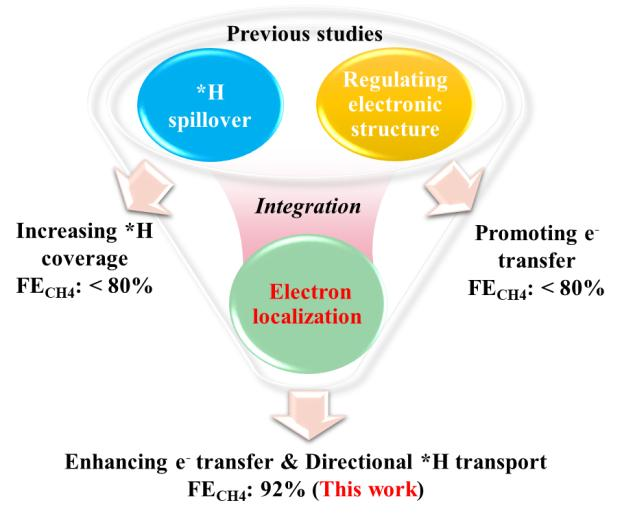In alignment with the global “dual carbon” initiative, devising innovative technologies for converting CO2 emissions from chemical processes into valuable chemical fuels and materials is of paramount strategic importance. A collaborative breakthrough comes from the team led by Professor Zhang Zehui of the School of Chemistry and Materials Science, SCMU, together with Professor Li Hu from Guizhou University. They have developed a dual-purpose technology strategy that anchors copper single atoms onto BiVO4 vacancies (Bi1-xVO4-Cu), facilitating electron localization and directed proton pumping. This technique notably enhances the adsorption and processing of key intermediates, leading to the efficient electrochemical production of CH4 from CO2. Their significant findings were published on December 28, 2023, in the internationally acclaimed journal Advanced Materials (Impact Factor: 29.4, JCR Q1), under the title “Electron Localization-Triggered Proton Pumping Toward Cu Single Atoms for Electrochemical CO2 Methanation of Unprecedented Selectivity” (DOI: 10.1002/adma.202311149).

Comparison of This Research’s Findings with Existing Literature
Photo provided by the School of Chemistry and Materials Science
This research ingeniously adjusts the bond strength between the electrode surface and the substrates/intermediates via non-covalent interactions, considerably facilitating the generation and stabilization of crucial intermediates (*CHO) and achieving a highly selective CH4 electro-synthesis process. Additionally, electron localization significantly boosts electron transfer, enhancing the catalyst’s CO2 adsorption capability and the efficiency of electrocatalytic CO2-to-CH4 conversion.
Furthermore, the collaboration between Professors Zhang Zehui and Li Hu in talent development and scientific exploration has yielded a series of notable achievements, with their research being featured in leading international journals (Applied Catalysis B: Environmental, 2023, 338, 122962, Impact Factor: 22.1, JCR Q1; Journal of Energy Chemistry, 2023, 79, 535, Impact Factor: 13.1, JCR Q1, ESI Highly Cited Paper).
Edited by Liu Qiong ;Reviewed by Lei Changsheng